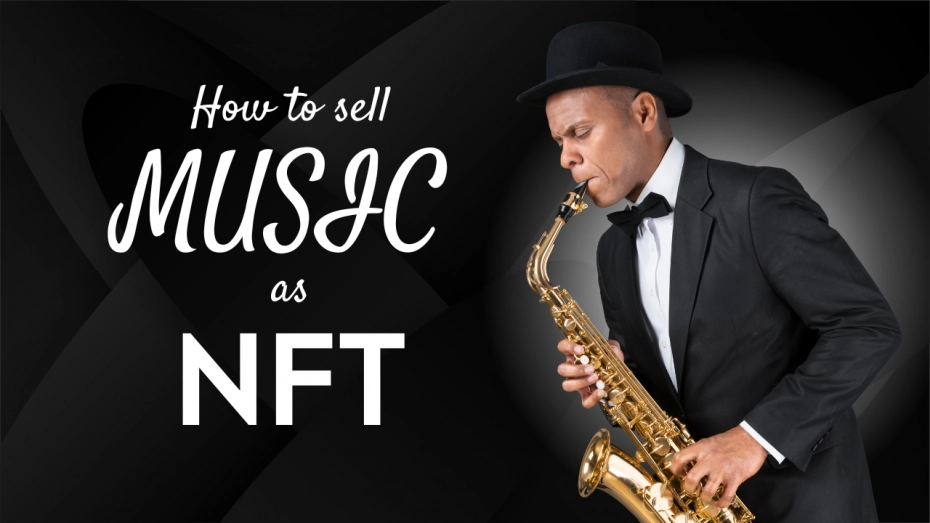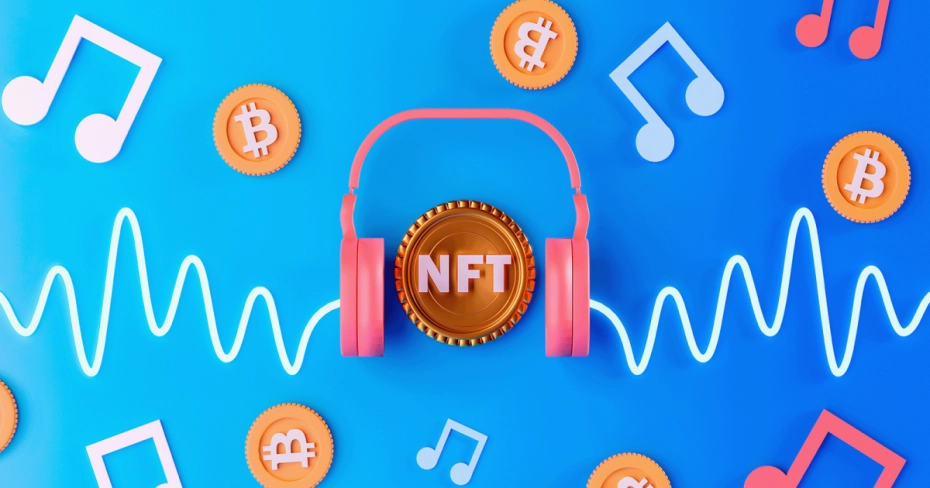
News about musicians who are starting to use NFT to monetize their work is regularly published on the Internet. Non-fungible tokens are used in all types of art, they are tied to various digital works, most often these are some kind of images and animations, but now there is an increase in musical NFTs.
We decided to collect complete information about those special tokens, which have become very popular in recent months. We will explain what it is, and how to sell music as an NFT, and we will also talk about the development prospects of this area, which is also suitable for investment. And you’ll also know where to sell NFT music.
Each NFT token is an entry in the blockchain, just like a full-fledged cryptocurrency. They can be hosted on different networks, Ethereum, Tezos, EOS, etc. The main difference from conventional cryptocurrencies is that such tokens are non-fungible. One bitcoin is equal to one bitcoin, and one music track tied to an NFT cannot be equivalent to another work.
NFT tokens are unique because they claim ownership of some kind of digital asset. It can be not only music but also paintings, game items, virtual real estate, and much more. Due to the mass distribution of this technology, many musicians have already begun to use it.
Non-fungible tokens or NFTs are unique, digital collectibles presented on the blockchain in the token format. NFT highlights the fact that each token is somehow different from the other, which means that two identical tokens cannot exist.
NFT can be contrasted with a currency like Ethereum, where each ETH token is equal (fungible) to another ETH token.
In the case of NFT audio, each track will have its unique token, and it cannot be replaced by any other. This approach, defined as “a record of ownership of an asset used to prove its authenticity or quality”, gives all-digital works their inherent value.
Anyone can take a photo of the Mona Lisa, but only one person owns it. It's the same with NFTs. The token proves that you own the original version of the digital asset.
The idea of NFT becomes more interesting when audio and video material interact.
It so happened that NFTs were mostly pictures. Gradually, gif images began to appear, and only then did the mp4s format (NFT audio).
From a technical point of view, NFT audio differs from others only in its format. However, against the background of the rest, they stand out for their versatility, as they combine an audio file with a picture or a video sequence.
There are no restrictions, anyone can create music NFT by linking any audio files to them. It may not even be music tracks, but some kind of recordings, podcasts, lessons, etc. If we talk specifically about music, then this option is suitable:
Many still doubt that it is worth moving in this direction. In the same way, no one believed 10 years ago that Bitcoin could cost more than $1,000, but at the moment its rate exceeds $40,000. If the topic is of interest, it is worth using, regardless of popularity, type of art, and skills.
Almost all digital objects can be used to create non-fungible tokens. Collectible pictures, videos, game artifacts, and much more are sold in this format. In response to the question: "Can you sell music as NFT?" we can say with full confidence - yes, you can!
What NFTs can musicians create? Tracks and albums are the most common. American DJ 3Lau made over $11 million by selling his album Ultraviolet via NFT. It was previously published on various platforms, but buyers received unreleased tracks as well as a limited edition vinyl.
Images — pictures prepared for albums and tracks are translated into NFT. They can also be presented in video format. Mike Shinoda (one of the founders of the band Linkin Park) demonstrated a striking example, he earned $ 6600 selling animated covers for the Happy Endings album.
Copyright income is extremely rare, but there are already examples. Canadian musician Jacques Green sold an NFT for 13 ETH, which contained a short video and the right to receive a percentage of the profits from the work. The author is ready to contact the new owner of the NFT directly to conclude a formal agreement on receiving dividends.
Demos and ideas are easily digitized and can then be sold as NFTs. The famous crypto artist Banksy sold the painting, which was destroyed after digitization. By analogy, musicians can sell unreleased tracks, some work, demos, lyrics, and more.
Merchandise - such NFTs are sold for unique opportunities. For example, holders are invited to online concerts, they are allowed to hear the track first, they are given access to an exclusive album, etc. You can think of anything, even direct communication with the star or personal meetings.
Creative people do not sit still, they come up with many interesting ideas to make money on NFTs. Someone starts to draw, others sell their photos, clips, and much more. There are plenty of options, the main thing is to cause a stir around your tokens.
So far, only a few have decided to use crypto technologies to monetize their creativity. This is usually due to a lack of experience and knowledge. Now we’ll tell you how to release music as NFT.
First, you need to create a crypto wallet and decide on which network the NFTs will be. Ethereum is more commonly used, and MetaMask is suitable for this blockchain. Install the extension in the browser, transactions will be carried out through it, commissions will be paid, and more.
The wallet needs to be replenished because, on almost all platforms for issuing your NFTs, you have to pay a commission (gas). Due to the constant change in the ETH price and gas fees, the fees may vary.
Now it's time to choose the platform on which the NFTs will be hosted. The choice is large, below we will present the best sites. They do not need to register, the entrance is done through a crypto wallet. Just do not try to create NFTs with the same files in different services.
Linking a file to NFT is not difficult, you will be asked to fill out a short form and upload a track (album, cover, etc.). Below we will show how this procedure works. You just need to come up with a name and description. At this stage, a commission is paid.
When putting NFTs up for sale, you only need to enter a value. How much to evaluate your files, decide for yourself. They are placed in the general catalog, it remains to wait for them to be bought. To make this happen faster, you should tell your fans about it (for example, through social networks).
There are no restrictions on the number, so you can turn at least all your tracks into NFTs and collect a collection on the marketplace. Just keep in mind that gas will have to be paid for each issue, if there is no money, it is worth considering platforms where tokens are created not on Ethereum, but through other networks.
Already, the music industry is turning towards NFT, and many other areas are integrating crypto technologies. With the help of non-fungible tokens, it is more convenient and easier to confirm ownership of any digital object, be it an album, a single track, or a collection of sounds. In addition, it allows you to earn creativity without intermediaries and complex schemes.
The mass distribution of NFTs is not ignored by large companies such as Warner Music Group. They are already collaborating with Genies and the Bored Ape Club. If this direction continues to develop at this pace, artists and musicians will be able to abandon labels, managers, and streaming platforms and become independent.
The number of creative people translating their work into NFT is rapidly increasing. While it is considered something new, fresh, and unusual. But very soon it may become a classic. The only disadvantage of technology is that many people start releasing something purely for financial reasons, without trying to present something new for true fans.
If you are a creative person, choose the right service, create your tokens, and start selling music as NFT. It is foolish to miss such an opportunity, while this topic remains in trend, you can make good money on it, and at the same time attract even more attention to yourself.
0 replies on “How to sell music as NFT”